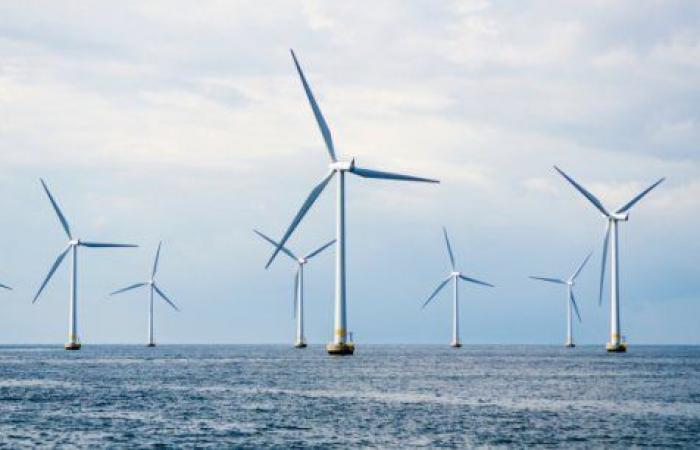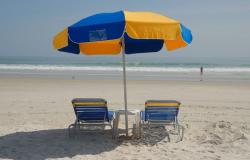In a recent report, the Global Wind Energy Council (GWEC) included Morocco for the first time among the markets to watch in the offshore wind sector. Decryption!
Morocco has stood out on the continent in recent years in the field of renewable energies. From the organization of COP 22 to its gigantic green projects, Morocco has a real aura in this area. After green hydrogen, Morocco seems to have the wind in its sails in the offshore wind sector. According to the latest 2024 GWEC report, “Morocco has a significant resource and a government committed to the development of this technology in the region.” This is the main idea that emerges from the Global Offshore Wind Report 2024 published by GWEC.
A report on the evolution of the offshore wind sector globally to guide industries towards the goal of 380 GW of offshore wind power needed by 2030 to stay on a trajectory of 1 .5°C. It should also be noted that the big surprise of this edition is the integration of Morocco and South Africa. “The growth of offshore wind is now much more than a European, Chinese or American story, as emerging markets take important steps to become mature markets,” explains GWEC. In Africa, the list of potential offshore wind market leaders includes Morocco in first place, followed by South Africa, Tunisia, Egypt and Kenya.
An Atlantic coast with great potential
Still according to GWEC experts, Morocco’s potential is based on its natural resources in terms of wind energy. The South Atlantic coast of the Kingdom has significant potential to host offshore wind farms, with an average wind speed above 10 meters per second (m/s), highlights the GWEC report. It should also be noted that the European Investment Bank (EIB) recently granted the Moroccan Agency for Sustainable Energy (MASEN) a grant of 2 million euros for carrying out a feasibility study on the offshore wind power in Morocco. The study will assess the potential for transforming Morocco’s Atlantic coast into an offshore wind energy center, taking into account the technical, environmental and economic requirements of these projects.
Read also | AFD and INNOVX, a subsidiary of UM6P, join forces to promote sustainable agriculture in Africa
Contacted by Challenge, energy expert Said Guemra provides us with details on the challenges of this technology: “Offshore wind power finds its interest in the absence of obstacles that the wind encounters on land, as a result, it there is better regularity of winds at sea, and production which can be significantly more interesting than on land. Investment in offshore wind power is practically double that on land, with profitability difficulties on certain projects. To deal with transport problems, hydrogen can be produced at the base of wind turbines and subsequently evacuated. The load factor which characterizes wind production is on average 24% in Europe on land, while at sea, this same factor is 38%, or 50% more, which explains the European enthusiasm for offshore wind.”
“For the case of Morocco, the average wind load factor on land varies between 34% and 43%. Moroccan onshore wind power production is therefore higher than European offshore wind power production, which does not mean that we do not need offshore wind power. We must study the issue, especially on our Atlantic coasts. These figures largely explain Morocco’s great success in hydrogen production and the future competitiveness of production costs which depend mainly on wind production. Offshore wind power can become interesting for Morocco, from a load factor of 60% or even 70%. Studies must be carried out particularly in our southern regions, in order to understand if there is an opportunity for offshore wind projects. This option is planned for certain hydrogen production projects in Dakhla, which means that investors do not rule out the possibility of offshore wind power. The first measurements will tell us about the possibilities offered, but the competition between offshore wind power and onshore wind power will be tough for Morocco, which already has excellent wind resources on land, and it will be difficult to justify double the investment. »
Source: GemTech
For his part, a physics professor and energy expert is more pessimistic on the subject. “Even if the citation of Morocco in this prestigious report is to be welcomed, offshore wind technology is not yet on the agenda for reasons of cost and performance gains. »
Need for a conducive environment
“The majority of these wind turbines will be installed by the turn of the decade, and two-thirds between 2029 and 2033. This rapid expansion of deployment must rely on increasing collaboration between industry and government as well as the creation of frameworks streamlined and effective policies and regulations. This anticipated growth will be driven by the arrival of the next wave of offshore wind markets, such as Australia, Japan, South Korea, Philippines, Vietnam, Brazil, Colombia, Ireland and Poland, where policy developments and unprecedented attention from governments, industry and civil society are creating the conditions for long-term, large-scale wind development in sea,” estimate GWEC experts. As a result, annual installations of offshore wind turbines are expected to triple in 2028 compared to 10.8 GW in 2023. By 2033, they are expected to reach 66 GW, increasing the share of offshore wind installations in new wind installations. from 9% to at least 25%.
Read also | Samir Rachidi: “Developing an electric charging ecosystem is crucial to supporting electric mobility”
Badr Ikken, CEO of GI3, underlines: “Morocco has immense onshore wind potential that is still largely untapped. This theoretical potential exceeds 11,000 TWh per year, thus allowing the installation of several hundred gigawatts. In our national context, the installation of offshore wind turbines is not relevant because onshore alternatives also offer load factors above 60%. One of the main concerns is the impact on marine biodiversity. Areas designated for offshore wind farms are often critical habitats for many marine species and are crucial for fishing and other economic activities vital to coastal communities. In addition, the maintenance costs of offshore wind turbines are significantly higher than those of onshore wind turbines. Access to offshore wind turbines requires specialized infrastructure and more complex operations due to marine conditions, leading to additional expenses and logistical challenges. These costs make the energy produced by offshore wind turbines less competitive than onshore renewable energy. In conclusion, the installation of offshore wind turbines must be carefully evaluated. In the case of Morocco, land-based alternatives clearly have fewer environmental impacts and reduced maintenance costs, making them more viable and environmentally friendly. »






